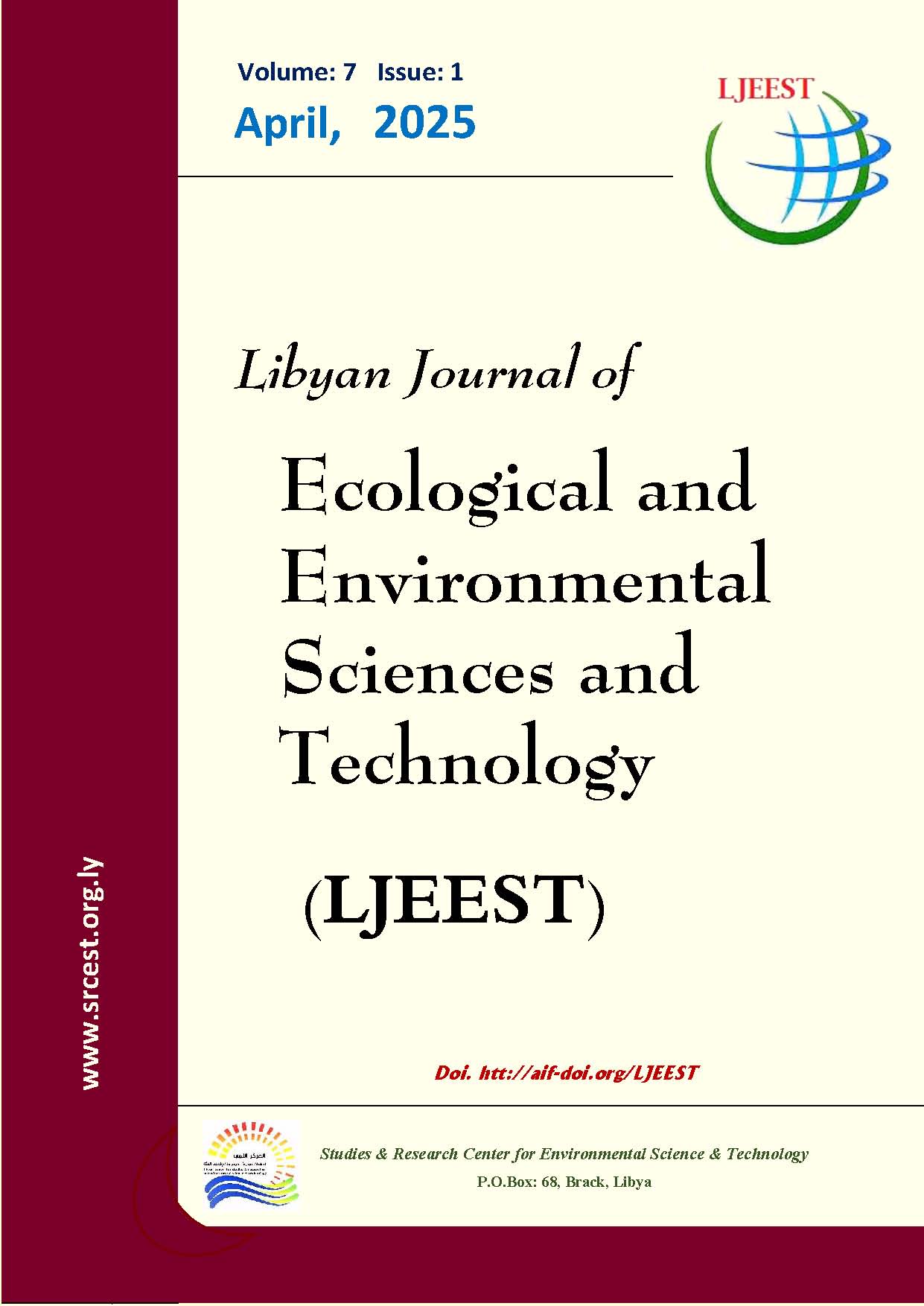Effect of Different Cultivation on Quantity and Activity of Azotobacter Sp. in Soil
DOI:
https://doi.org/10.63359/0tsm3a41Keywords:
Azotobacter spp, Abundance, Kurdistan Location, Molecular Analysis, Soil fertilityAbstract
Farmers are facing challenges with cultivating different crops because of the continuous impact of calcareous soil on microbial activities dynamics. The key objective was to identify and quantify Azotobacter spp in cultivated and uncultivated soils across different locations and analyse their phylogenetic relationships based on partial 16S rRNA gene sequences. Soils were sampled from diverse crop locations and subjected to bacterial diversity analysis using the Maximum Likelihood method. The abundance and diversity of Azotobacter varied significantly between cultivated and uncultivated soils. The cultivated soils showed a higher prevalence of Azotobacter chroococcum in all locations, while uncultivated soils contained other species such as Azotobacter vinelandii and Azotobacter salinestris. The phylogenetic analysis confirmed the close genetic links among Azotobacter spp. as well as their unique clustering in relation to other genera such as Bacillus and Xanthobacter. The 16S rRNA sequencing phylogenetic tree showed that the identified Azotobacter species and other nitrogen-fixing taxa such as Xanthobacter, Pseudomonas, and Klebsiella, have close evolutionary links. The findings also showed that improved nitrogen fixation and cation exchange characteristics were indications of increased Azotobacter activity in the cultivated soils. This prevalence of Azotobacter in cultivated soils indicated their ability for adaptability in agricultural lands. The study concludes that cultivation practices significantly influence Azotobacter populations, favouring species with high nitrogen-fixing efficiency. Enhancing Azotobacter activity in soil can improve nitrogen availability and soil fertility. It is recommended to adopt crop rotation, organic amendments, and reduced chemical fertilizer use to sustain Azotobacter populations and maintain soil health. Hence, farmers and researchers in the Kurdistan area of Erbil are advised to use biofertilizers based on Azotobacter on calcareous soils to increase soil fertility and microbial activity.
References
Aasfar, A., Bargaz, A., Yaakoubi, K., Hilali, A., Bennis, I., Zeroual, Y., & Meftah Kadmiri, I. (2021). Nitrogen fixing Azotobacter species as potential soil biological enhancers for crop nutrition and yield stability. Frontiers in microbiology, 12, 628379.
Altschul, S. F., Madden, T. L., Schäffer, A. A., Zhang, J., Zhang, Z., Miller, W., & Lipman, D. J. (1997). Gapped BLAST and PSI-BLAST: a new generation of protein database search programs. Nucleic acids research, 25(17), 3389-3402.
Atlas, R. M. (2010). Handbook of Microbiological Media (4th ed.). CRC Press.
Datsko, O., Kovalenko, V., Yatsenko, V., Sakhoshko, M., Hotvianska, A., Solohub, I., ... & Tkachenko, R. (2024). Increasing soil fertility as a factor in the sustainability of agriculture and resilience to climate change. Modern Phytomorphology, 18, 110-113.
de Lima, J. D., de Souza, A. J., Nunes, A. L. P., Rivadavea, W. R., Zaro, G. C., & da Silva, G. J. (2024). Expanding agricultural potential through biological nitrogen fixation: Recent advances and diversity of diazotrophic bacteria. Australian Journal of Crop Science, 18(6), 324-333.
Dou, X., Zhang, C., Chen, L., Wu, Q., Zhou, G., Ma, D., ... & Zhang, J. (2024). Calcium forms influence soil organic carbon by mediating labile organic carbon fractions, carbon pool management indices and microbial communities in calcareous alkaline soils. Plant and Soil, 1-17.
Glick, B. R. (2012). Plant Growth-Promoting Bacteria: Mechanisms and Applications. Scientia Horticulturae, 144, 51–57.
Gothandapani, S., Sekar, S., & Padaria, J. C. (2017). Azotobacter chroococcum: Utilization and potential use for agricultural crop production: An overview. Int. J. Adv. Res. Biol. Sci, 4(3), 35-42.
Guo, H., Hu, Z., Zhang, H., Hou, Z., & Min, W. (2019). Soil microbial metabolic activity and community structure in drip-irrigated calcareous soil as affected by irrigation water salinity. Water, Air, & Soil Pollution, 230, 1-12.
Jnawali, A. D., Ojha, R. B., & Marahatta, S. (2015). Role of Azotobacter in soil fertility and sustainability–a review. Adv. Plants Agric. Res, 2(6), 1-5.
Kasiviswanathan, S. C. B., Duraisamy, S., Thiyagarajan, C., Subramanium, T., Dananjeyan, B., Thiruvenkatasamy, S., ... & Palani, R. (2024). Enzymatic alterations of soil and plant system on applied Zn sources, organics and microbial inoculants in zinc deficient calcareous and non-calcareous soils. Journal of Plant Nutrition, 47(11), 1850-1866.
Kaur, S., Kalia, A., & Sharma, S. (2024). Bioformulation of Azotobacter and Streptomyces for Improved Growth and Yield of Wheat (Triticum aestivum L.): A Field Study. Journal of Plant Growth Regulation, 1-17.
Kumar, P., & Dubey, R. C. (2016). Plant Growth-Promoting Rhizobacteria and Their Role in Alleviating Soil Stress. Springer Handbook of Environmental Chemistry, 94, 145–168.
Mahmood, A., et al. (2020). Azotobacter as Biofertilizer: A Step Toward Sustainable Agriculture. Journal of Applied Microbiology, 129(2), 507–519.
Moeinnamini, A., Weisany, W., Hadi, M. R. H. S., Torkashvand, A. M., & Mohammadinejad, A. (2024). Enhancing Photosynthesis Pigment, Protein Content, Nutrient Uptake and Yield in Maize (Zea mays L.) Cultivars Using Vermicompost, Livestock Manure and Azotobacter chroococcum. Journal of Soil Science and Plant Nutrition, 1-11.
Panhwar, Q.A., Ali, A. & Depar, N. (2024). Influence of various organic nutrient sources on microbial abundance, growth and yield of rice (Oryza sativa L.) under field conditions. Mehran University Research Journal of Engineering and Technology, 43(4), 69-81.
Rashid, M. I., et al. (2019). Microbial-Mediated Mitigation of Soil Alkalinity in Calcareous Soils: Mechanisms and Applications. Applied Soil Ecology, 139, 71–83.
Shahwar, D., Mushtaq, Z., Mushtaq, H., Alqarawi, A. A., Park, Y., Alshahrani, T. S., & Faizan, S. (2023). Role of microbial inoculants as bio fertilizers for improving crop productivity: A review. Heliyon, 9(6).
Singh, S., et al. (2018). Role of Azotobacter in Soil Fertility and Sustainability. Journal of Soil Science and Plant Nutrition, 18(3), 683–694.
Tripathi, M. K., Shukla, S. K., Jaiswal, V. P., Sharma, L., Nagargade, M., Pathak, A. D., ... & Ranka, A. (2024). Integration of Mycorrhizae, Azotobacter and Pseudomonas spp (PSB) with NPK and their Effects on Sugarcane Crop and Soil Health in Uttar Pradesh, India. Sugar Tech, 1-17.
Yadav, B. K., et al. (2021). Enhancing Productivity in Calcareous Soils Using Biofertilizers: A Review. Frontiers in Soil Science, 2, 39.
Yilihamu, A., Ouyang, B., Ouyang, P., Bai, Y., Zhang, Q., Shi, M., ... & Yang, S. T. (2020). Interaction between graphene oxide and nitrogen-fixing bacterium Azotobacter chroococcum: transformation, toxicity and nitrogen fixation. Carbon, 160, 5-13.
Zaidi, A., et al. (2017). Role of Azotobacter in Improving Soil Quality and Crop Yield. Microbial Strategies for Crop Improvement, 22, 145–159.
Downloads
Published
Issue
Section
License

This work is licensed under a Creative Commons Attribution-NonCommercial 4.0 International License.














